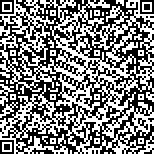| 摘要: |
| 于2013年5月到2014年6月,在大亚湾大鹏澳牡蛎区及邻近海域开展了为期14个月的采样调查,利用高效液相色谱(HPLC)法对表层水体中微微型浮游植物(0.7-2.7μm)光合色素进行测定,并应用色素化学分类软件CHEMTAX对自养微微型浮游生物(aototrophicpicoplankton,APP)功能类群进行分析。结果表明,该海域APP中共检出了15种光合色素,其中青绿藻素(Pras)和玉米黄素(Zea)是微微型色素中浓度最高的2种特征色素,均具有明显的季节变化特征:Pras主要出现在低温季节(牡蛎养殖期),而Zea主要出现在高温季节(非牡蛎养殖期)。CHEMTAX分析表明,大鹏澳海域APP最主要的类群是硅藻、蓝藻和青绿藻,而甲藻、隐藻、定鞭金藻、绿藻和金藻生物量较低。温度和营养盐浓度是影响大鹏澳海域APP的时空分布的重要因素,青绿藻主要出现在低温季节(主要在冬季牡蛎养殖期间),且其生物量与溶解无机氮呈显著正相关;而蓝藻则主要出现在高温季节,与温度呈显著正相关。另外,贝类养殖也是能够影响APP空间分布的重要因素,在大鹏澳海域牡蛎养殖期间,青绿藻生物量在养殖区明显高于非养殖海域。 |
| 关键词: 大亚湾 自养微微型生物 光合色素 化学分类 水产养殖 |
| DOI:10.11693/hyhz20180700162 |
| 分类号:Q948.8 |
| 基金项目:中国水产科学研究院黄海水产研究所所基本业务费专项资金,20603022018002号;国家自然科学基金项目,41676103号;农业部南海渔业资源开发利用重点实验室开放基金,LSF2014-04号。 |
附件 |
|
| THE TEMPORAL AND SPATIAL DISTRIBUTION OF AOTOTROPHIC PICOPLANKTON AND COMMUNITY IN THE OYSTER CULTURE AREA AND ITS ADJACENT WATERS OF DAPENG COVE, GUANGDONG, CHINA |
|
BAI Mei-Na1, JIANG Tao2, CHEN Fei-Yu1, WANG Zhao-Hui3, JIANG Tian-Jiu1
|
|
1.Research Center for Harmful Algae and Marine Biology, Jinan University, Guangzhou 510632, China;2.Key Laboratory of Sustainable Development of Marine Fisheries, Ministry of Agriculture Yellow Sea Fisheries Research Institute, Chinese Academy of Fishery Sciences, Qingdao 266071, China;3.Research Center for of Hydrobiology, Jinan University, Guangzhou 510632, China
|
| Abstract: |
| Aototrophic picoplankton (APP) pigments in sea surface layer in oyster area and adjacent area of Dapeng Cove, near Daya Bay, Guangdong, South China, were analyzed in high-performance liquid chromatography (HPLC) in four stations from May 2013 to June 2014. We identified the contributions of different picophytoplankton assemblages to chlorophyll a using Chemical Taxonomy software (CHEMTAX). Fifteen pico-sized phytoplankton pigments were detected. Prasinoxanthin and zeaxanthin were the two major pigments, and both of them had obvious seasonal variation. Prasinoxanthin occurred mainly in low temperature seasons (oyster culture period), and zeaxanthin in the high temperature seasons (non-culture period). CHEMTAX results shows the community of APP comprised mainly diatoms, cyanobacteria, prasinophytes, and the biomass of dinoflagellates, cryptophytes, haptophytes, chrysophytes and chlorophytes were quite low. The concentration of nutrients and temperature were important factors affecting the spatial and temporal distribution of APP in Dapeng Cove. Prasinophytes occurred mainly in the low temperature seasons (mainly during winter oyster culture period), and its biomass was significantly positively correlated with dissolved inorganic nitrogen; while cyanobacteria occurred mainly in the high temperature seasons, and significantly positively correlated with temperature. In addition, shellfish culture was also an important factor that could affect the spatial distribution of APP. During the oyster culture period, the biomass of prasinophytes was significantly higher in the culture area than in the non-aquaculture area. |
| Key words: Daya Bay aototrophicpicoplankton pigments chemotaxonomy aquaculture |
